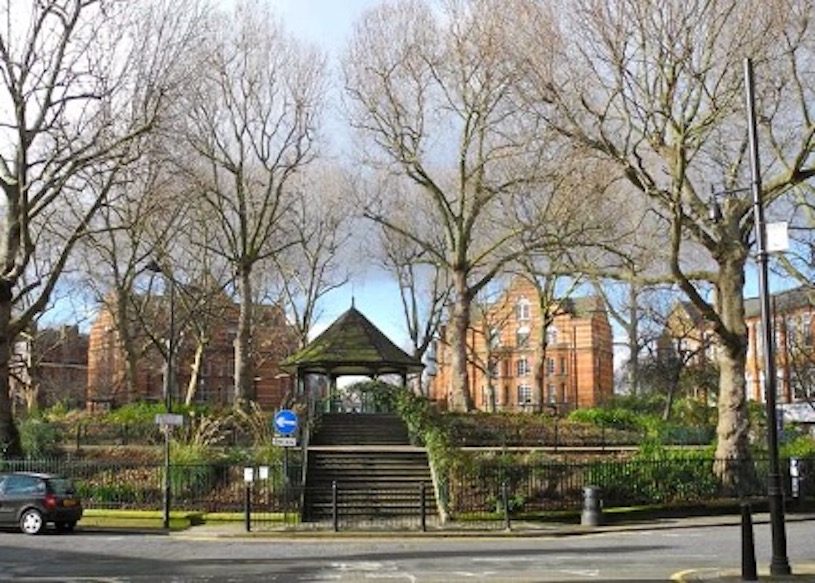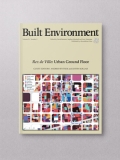Will Covid-19 change the way we live in our cities?
Cities are resilient. In the past, cities have survived pandemics and other disruptions including wars, environmental disasters, economic crisis, and technological breakthroughs. However, whilst cities have survived, the way we live and experience them has been altered quite remarkably by such events. This issue of Built Environment is dedicated to the way the latest of these disruptions – Covid-19 and the global pandemic – could change the way we live in our cities.
When we started our research ‘Planning the post-Covid city’ looking at the way the planning sector and discipline are going to be affected by the global pandemic, we identified a set of key challenges that the post-Covid world will be called to address. All these challenges are reflected by the articles contained in the current issue. Yet this list is by no means exhaustive – the longer-term implications of the pandemic on society will take some time to emerge. A particular evolving issue is the extent to which other, on-going disruptions and policy objectives interact with the need to think about the post-Covid city. Digital technology and the climate emergency are two obvious examples.
The first challenge concerns the future configuration of commercial spaces and our high streets. The accelerated shift to online working and e-commerce might have had a permanent impact on offices and retail and it will definitely change the way we work and shop. Of course, this shift was already happening before 2020, but the pandemic has accelerated the pace of it, providing a global mass trial to remote working and shopping. It is unlikely that either office or retail will die in physical terms after Covid, but the whole experience of them might change for most of us. The direct consequences on cities will be visible in terms of vacancies, potential urban voids, and buildings in need of being repurposed. Yet even now, the full impacts are unclear as some companies and organisations are requiring employees return, others are planning on 60% office working and others still allowing employees to decide. Some employees have fully embraced home working whilst others can’t wait to get back into the office.
The level of physical return to work in our cities and the uncertainty surrounding it is raising other issues. For the first time after the early 2000s, we are at a turning point in urban regeneration strategies. At that time, policymakers were called to address cities’ post-industrial legacy of warehouses and industrial premises, left behind by the impacts of globalisation. Many abandoned and run-down areas were turned into museums, creative quarters, and retail. Now, the regeneration of high streets is again a topic that is currently keeping many planners busy, and this will probably continue for the next decade as cities evolve and adapt to the challenges of the pandemic and the disruption brought by digital technology. New, creative solutions are needed. It is not just a matter of repurposing under-utilised spaces, but a more structural type of rethink: reimagining what they will be used for and how they will be experienced and shape our life, leisure, and work time in what will be a different but yet unknown role for cities.
The second major challenge brought forward by the pandemic, regards the use of infrastructure and public goods such as transport, water and energy and future patterns and needs. This debate is quite often paired up with discussions on the use of technology to optimise resources and their uses, as in the article on the sharing city from Chan and Zhang published in this issue. Ultimately, this point reflects the accelerated need to action the fight against climate change at different levels and in different sectors.
Finally, lockdown has once more focused our attention to housing needs. In bigger cities, the never-ending planning dilemma on density has been revived. But more discussion has also been generated regarding standards and design, as well as location. This renewed awareness has emerged in relation to discussions on wellbeing and living standards and the need for more space for different sorts of activities like remote working, exercising, or even childcare. In rural contexts, isolation and limited access to services in relation to the long distances and sprawl have been the counter side of the problem. The relation between home-working and housing needs, their impacts and correlations with spatial and socio-economic inequalities have been quite interestingly highlighted and unpacked by both Holliss’s and Üçoğlu et al.’s articles in the latest issue of BE.
Previous pandemics led to similar challenges and the policy outcomes can provide some clues as we feel our way towards the future. A key example is the Boundary Estate in London, formally opened in 1900. The development was one of the first social housing schemes built by a local authority having been initiated by London County Council in 1893 as a slum clearance scheme. Repeated outbreaks of cholera and very high death, crime, and poverty rates led the Council to redevelop the area. Health concerns were the primary driver, as the site was deemed insanitary by the Medical Officer of Health, a specially created agency of the County of London to address public health and improve living conditions. The Boundary Estate example also highlights another dimension of the post-Covid city: the need for planners to acquire new skills.

Image 1: Boundary Estate
Ultimately, and coming back to the present, the challenges discussed point to three major structural priorities that planners will have to address in the next decades: rebalancing socio-economic and spatial inequalities; tackling climate change; and ensuring a fairer level of public health.
Both impacts of Covid and answers to the highlighted challenges are likely to be differentiated geographically and influenced by the context and regulatory system as well as by the various international approaches to urban planning.
In the coming months, as part of our own research we will consult academics and practitioners from different sides of the world, different scales of cities, and with different contexts to understand future scenarios and the evolving and emerging challenges and solutions. In the meantime, we remain convinced that our cities will survive and, as usual, find a way to accommodate our needs and our best behaviours.
References
Chan, J.K.H. and Zhang, Y. (2021) ‘Wither’ the sharing city? Built Environment, 47(3), pp. 380–391.
Holliss, F. (2021) Working from home. Built Environment, 47(3), pp. 367–379.
Ucoglu, M., Keil, R., and Tomar, S. (2021) Contagion in the Markets? Covid-19 and housing in the Greater Toronto Area. Built Environment, 47(3), pp. 355–366.
________________________________________________________________
As ever we welcome further Built Environment blogs & tweets on this theme!
Listing Image/Image 1: Boundary Estate, London (Source: authors)


